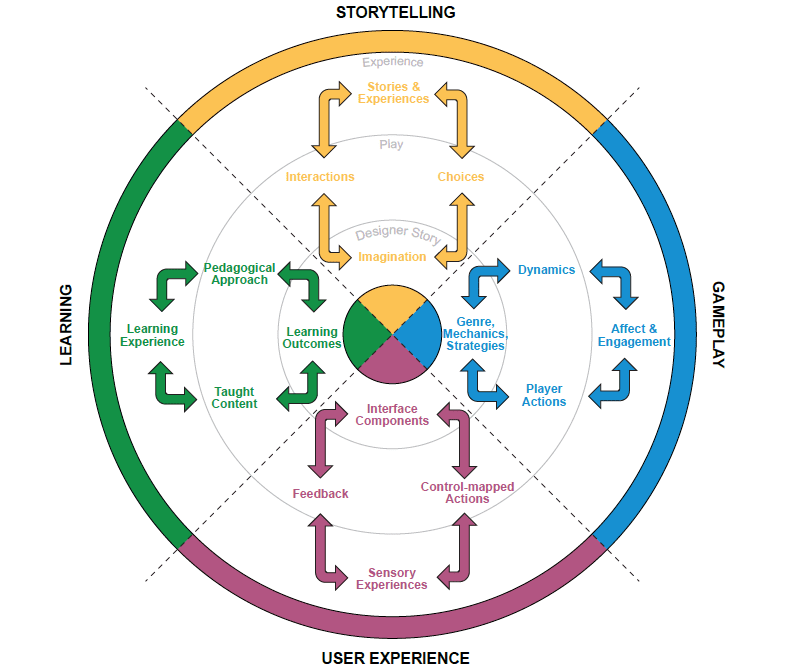Gameplay mechanics are the essential components of any game, dictating how players interact with the game world and the challenges it presents. They include character movement and controls, combat and combat systems, level design and puzzles, resource management, and permadeath and respawn systems. Each mechanic significantly impacts the player experience, and designers must carefully consider how each fits into the overall vision of the game. The best games incorporate a balanced combination of mechanics that engage the player and keep them interested throughout the game.
The Building Blocks of Gaming: An Overview of Gameplay Mechanics and Their Impact on Game Design
Gameplay mechanics are the essential components of any game, as they determine how players interact with the game world and the challenges it presents. Game designers need to carefully consider which mechanics to incorporate in their games, as their choices will determine the player experience and the game’s success. In this article, we will explore the key gameplay mechanics that game designers use to create engaging, immersive gameplay experiences.
Character Movement and Controls
The basic mechanics of game control are critical to any game’s success. Games must have responsive and intuitive controls that allow players to quickly learn and adjust to the game’s rules. Game designers can choose a variety of control schemes, including keyboard and mouse, gamepads, touch screens, and motion controllers. Movement mechanics should be versatile enough to allow players to explore the game’s environment while also being challenging enough to keep them engaged.
Combat and Combat Systems
Combat mechanics are another essential element of many games. Whether the game is a first-person shooter or a classic RPG, the combat system must offer a satisfying level of challenge for the player. Combat mechanics may include elements such as hit points, weapon selection, and timed attacks. They can also range from turn-based combat to real-time battles. Designers must balance the level of difficulty and player engagement to ensure that combat remains an enjoyable part of the gameplay.
Level Design and Puzzles
The world of the game is the most critical aspect of level design. It is up to the game designers to create an environment that is both engaging and immersive. They must also ensure that all elements within the world are connected logically and make sense in terms of the game’s story. Puzzles can be a great way to engage players and make them feel as if they are solving intricate problems. The puzzles themselves can range from easy to difficult, and the designer must strike a balance between player engagement and difficulty.
Resource Management
Resource management is an essential gameplay mechanic in many games. It refers to the management of resources such as money, health, weapons, and skills. Players are tasked with collecting and maintaining these resources throughout the game. The balance between the resources available and the difficulty of the game is critical, as the player will need to manage their resources well to proceed. If resources become too scarce, the game can become frustrating to the player.
Permadeath and Respawn Systems
Permadeath refers to a gameplay mechanic where the player character cannot be revived once they die. If the player dies, they must start the game over from the beginning. This mechanic can add a level of realism to the game, and provide a sense of urgency and consequence for the player. Respawn systems, on the other hand, allow the player to restart from a specific checkpoint or location. They add a level of convenience for the player and can make the game more accessible and enjoyable for those who do not want to replay portions of the game.
The Role of Gameplay Mechanics in Game Design
Gameplay mechanics are the building blocks of gaming, and they can significantly impact the design of a game. Game designers must consider each mechanic carefully and determine how it fits into the overall vision of the game. They must also take into account the player experience, as gameplay mechanics can affect the level of immersion and engagement that the player feels. A poorly designed mechanic can make or break a game, so it is essential to get it right.
Conclusion
In conclusion, gameplay mechanics are critical elements of any game, and game designers must carefully consider which ones to incorporate. Whether it is character movement, combat, level design, resource management, or permadeath and respawn systems, each mechanic can significantly impact the player experience. The best games incorporate a balanced combination of mechanics that engage the player and keep them interested throughout the game. It is up to the designer to create an immersive and engaging world that will keep players coming back for more.
